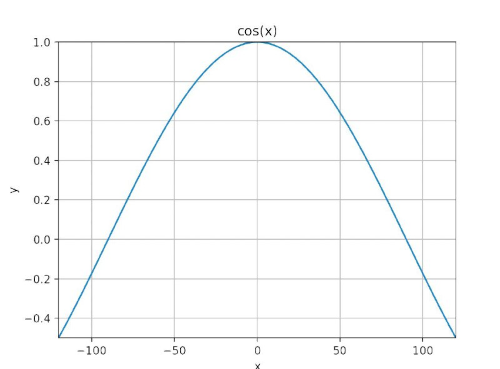Correlation

We have three probability distributions \(a\), \(b\), and \(c\). The correlation between \(a\) and \(b\) is \(1/2\). The correlation between \(a\) and \(c\) is also \(1/2\). What are the minimum and maximum possible values for the correlation between \(b\) and \(c\)?
The minimum and maximum correlation between \(a\) and \(c\) are \(-1/2\) and \(1\), respectively.
It is a well-known fact that one could model every distribution \(x\) as a vector \(f(x)\) in a high-dimensional space in a way
that the correlation of two distributions \(x\) and \(y\) would be equal to the cosine of the
angle between \(f(x)\) and \(f(y)\). We give a more detailed explanation
about this below but for now let \(f(a),
f(b)\), and \(f(c)\) be the
corresponding vectors for \(a\), \(b\), and \(c\). The correlations between \(a\) and each of \(b\) and \(c\) are equal to \(1/2\). This implies that that the angles
between \(f(a)\) and each of \(f(b)\) and \(f(c)\) are equal to 60 degrees. Therefore
the angle between \(f(b)\) and \(f(c)\) could be anything between \(-120\) to \(120\) degrees. The minimum cosine of the
angles in this range is \(-1/2\) (for
-120 and 120 degrees) and the maximum cosine of the angles in this range
is \(1\) when the angle is equal to
0.

To understand the relation between distributions and vectors recall the definition of correlation: \[\textsf{cor}(x,y) = \frac{\mathsf{covar}(x,y)}{\sqrt{\mathsf{var}(x)\mathsf{var}(y)}}.\] Let \(\Omega\) be the set of all events that define the probability distributions \(x\) and \(y\) and assume without loss of generality that all elements of \(\Omega\) have equal likelihood. We then define \(f(x)\) as an \(|\Omega|\)-dimensional vector as follows: \[f(x)_{\omega} = x(\omega) - \bar{x}\] where \(x(\omega)\) is the value of distribution \(x\) for event \(\omega\) and \(\bar{x} = \frac{\sum_{\omega' \in \Omega} x(\omega')}{|\Omega|}\) is the average value of distribution \(x\). \(f(y)\) will be defined similarly. In this setting, the correlation of \(x\) and \(y\) will be equal to:
\[\begin{aligned} \textsf{cor}(x,y) =& \frac{\mathsf{covar}(x,y)}{\sqrt{\mathsf{var}(x)\mathsf{var}(y)}}\\ = & \frac{\sum_{\omega \in \Omega} (x(\omega) - \bar{x}) (y(\omega) - \bar{y})/|\Omega|}{\sqrt{(\sum_{\omega \in \Omega} (x(\omega) - \bar{x})^2/|\Omega|)(\sum_{\omega \in \Omega} (x(\omega) - \bar{x}))^2/|\Omega|})} \\ = & \frac{\sum_{\omega \in \Omega} (x(\omega) - \bar{x}) (y(\omega) - \bar{y})}{\sqrt{(\sum_{\omega \in \Omega} (x(\omega) - \bar{x}))^2)(\sum_{\omega \in \Omega} (x(\omega) - \bar{x}))^2)}} \\ = & \frac{\sum_{\omega \in \Omega} f(x)_{\omega} f(y)_{\omega}}{\sqrt{(\sum_{\omega \in \Omega} f(x)_{\omega}^2)(\sum_{\omega \in \Omega} f(y)_{\omega}^2)}} \\ = & \frac{\sum_{\omega \in \Omega} f(x)_{\omega} f(y)_{\omega}}{\sqrt{\sum_{\omega \in \Omega} f(x)_{\omega}^2}\sqrt{\sum_{\omega \in \Omega} f(y)_{\omega}^2}} \\ = & \frac{f(x)\cdot f(y)}{||f(x)|| \cdot ||f(y)||} \\ = & \cos(\textsf{arc}(f(x), f(y))) \end{aligned}\] where \(\textsf{arc}(f(x), f(y))\) is the angle between \(f(x)\) and \(f(y)\).